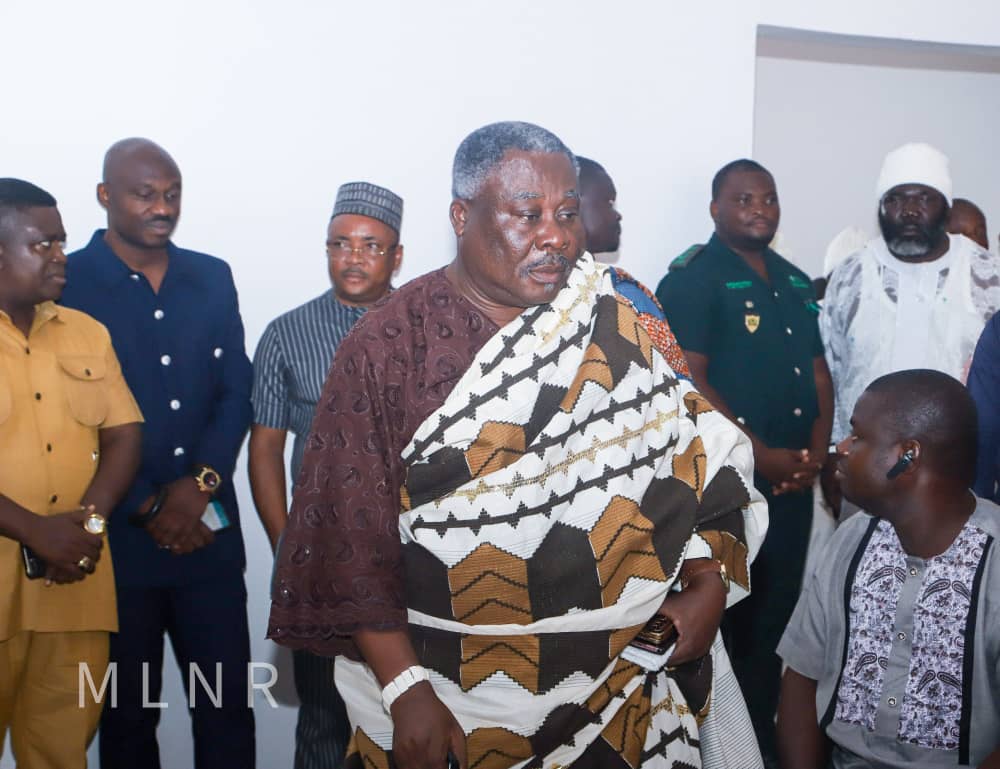Accra, March 30, GNA – The Ministry of Lands and Natural Resources and the Greater Accra Regional Coordinating Council are working together to resolve grievances of parties over land encroachment at the Sakumo Ramsar Site in Accra.
The stakeholders have safely arrived at an agreement to allow the Greater Accra Regional Coordinating Council to demolish some 136 structures within encroached areas of the site after they were updated on efforts to protect and ensure sanity in the area.
Addressing the media in Accra after fruitful discussions on the matter, Mr Benito Owusu-Bio, a Deputy Minister of Lands and Natural Resources, responsible for Lands and Forestry, said the demolition was “a necessary evil” to serve the greater good of all factions and the entire country.
The action would also enable Ghana to retain her position as a signatory to the United Nations’ Convention on Protecting Forests and Ramsar sites.

The Deputy Minister referred to the recent flood reports from other parts of the world and in Ghana as well, noting that if care was not taken and the demolition was not done as soon as practicable, bigger floods could swallow the cities and adversely affect innocent Ghanaian homeowners.
The 136 structures earmarked for demolition were not habitable homes, Mr Owusu-Bio said, explaining that they were “uncompleted structures that have no human living in them, fence walls, foundations, quarters of caretakers and similar others”.
The all-inclusive exercise would involve representatives of the traditional councils, the Landlord’s Association, and the Forestry Commission, among other stakeholders.
The Deputy Minister gave the assurance that regulation processes would be carried out for unaffected houses but was quick to add that it may take some time as a lot of work needed to be done.
These include taking inventory and ensuring that proper documentation was made for recordkeeping.
Mr Henry Quartey, the Greater Accra Regional Minister, expressed joy and relief at the conclusions reached after several years of strife and struggle over the matter.
In the spirit of settling all issues and litigations, he charged the Technical Director for Lands at the Ministry, Mr Maxwell Adu-Nsarfoa, to, as a matter of urgency, constitute a committee to resolve the boundary issue between the Forestry Commission and celebrity, a private developer, who claimed to own parts of the Ramsar Site.
“As the regulation processes commence, only lands with completed houses will be regularised, not bare lands,” he said, and cautioned those who would buy lands in the area with the idea that it would be regularised to avoid doing that.

Mr Quartey applauded the chiefs of the two Traditional Councils involved in settling the impasse; the Tema and Nungua Traditional Councils, for their patience and continuous support throughout discussions and negotiations.
Mr John Allotey, the Chief Executive Officer, Forestry Commission, updated the public on efforts and actions taken by the Lands Ministry and the Commission to protect the Ramsar Site from further encroachment.
He expresed the hope that the findings and recommendations of the Committee, set up by Mr Samuel Abu Jinapor, the Minister, to settle the matter would be adopted to help in the process.
He cited the reduction of the original size of the core area of the Ramsar site to a land space of 8.30km square, as one of the options available in salvaging the rest of the site.
GNA